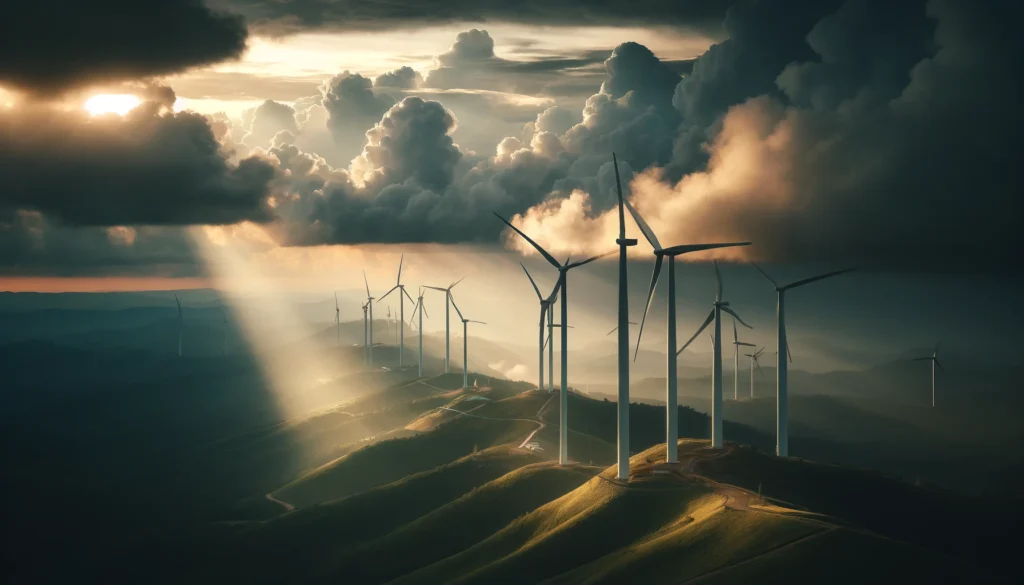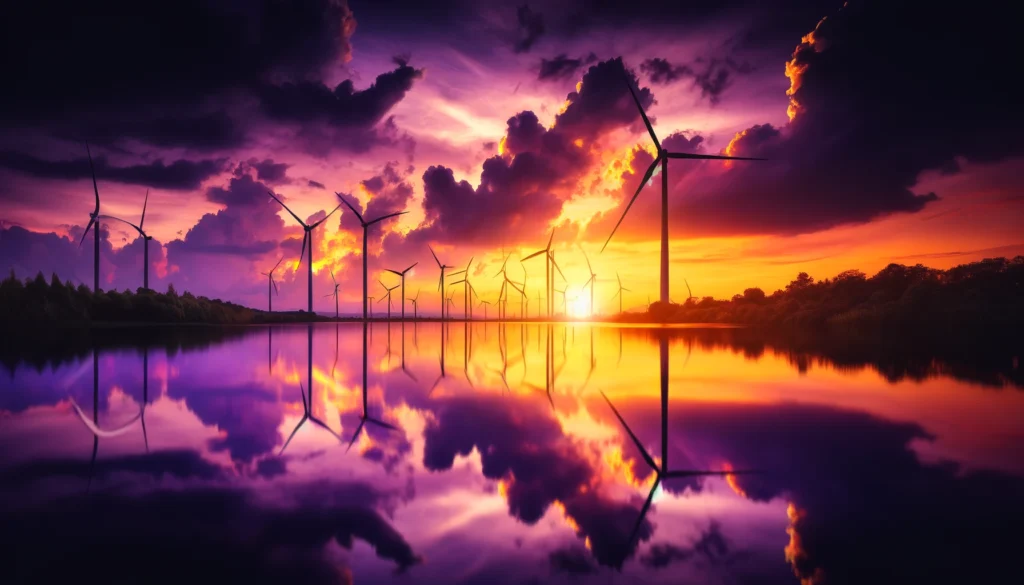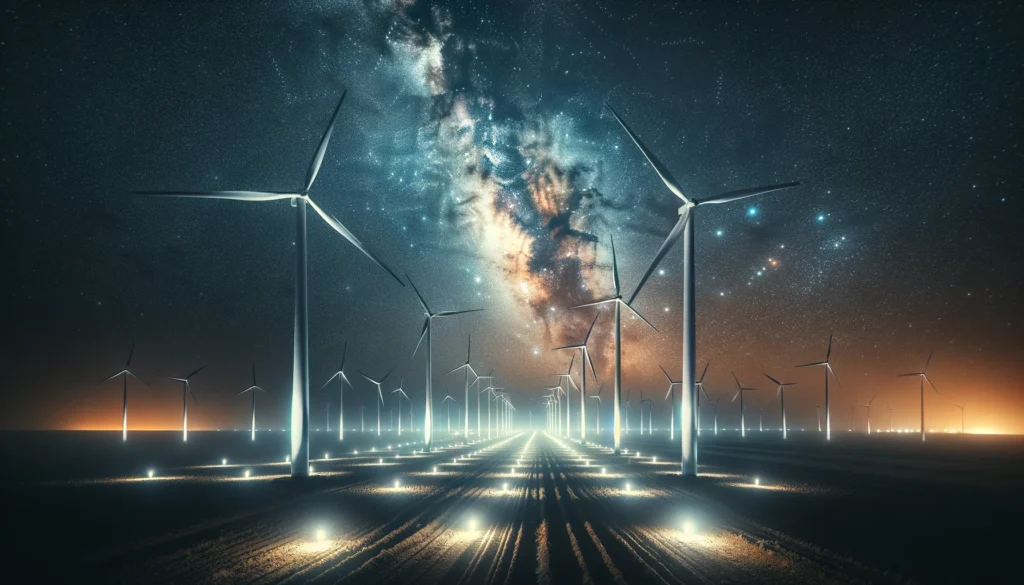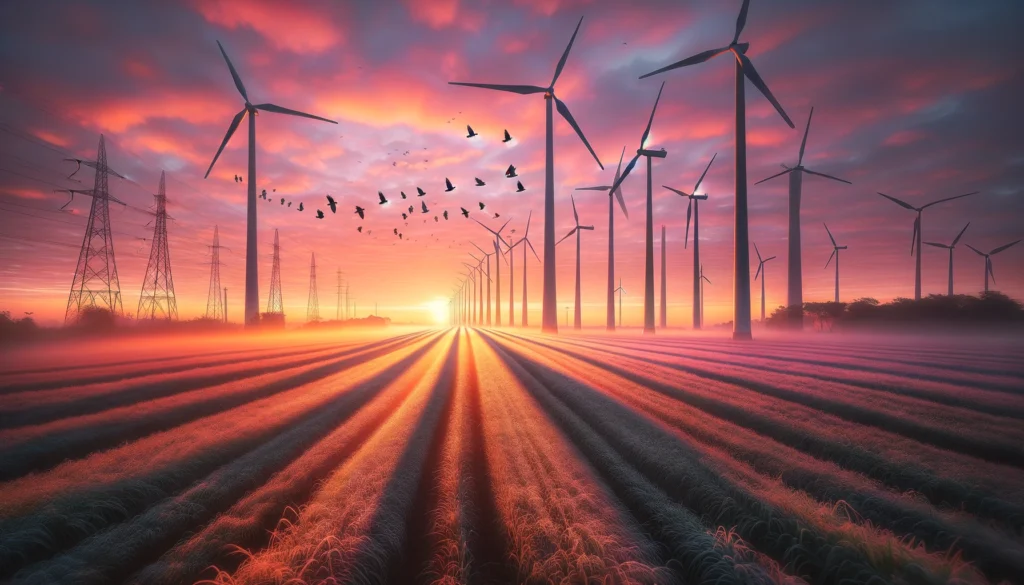Wind energy, one of the oldest sources of power known to mankind, has undergone a modern renaissance with the advent of wind farms. These towering sentinels of sustainability harness the kinetic energy of the wind and convert it into clean, renewable electricity. In an era where combating climate change is paramount, wind farms stand as beacons of hope, offering both environmental benefits and economic opportunities. This article delves into the beauty and efficiency of wind farms, exploring their impact on the landscape, energy production, and the future of sustainable power.
Table Of Content
We invite you to read: “The Role of Offshore Wind Farms in Climate Action”

The Aesthetics of Wind Farms: Blending Form and Function
Despite their practical purpose, wind farms possess a unique aesthetic allure. Rows of sleek turbines, gracefully rotating against the backdrop of the sky, create a mesmerizing tableau that blends seamlessly with the natural environment. Initially met with skepticism due to concerns about visual pollution, modern wind farms have evolved to integrate harmoniously into their surroundings.
Design considerations such as turbine spacing, height, and color schemes have been meticulously planned to minimize visual impact while maximizing efficiency. Innovative technologies like offshore wind farms have taken this a step further, positioning turbines out of sight from land, preserving coastal vistas while still reaping the benefits of wind energy.
Efficiency and Energy Production: The Power of the Wind
Beyond their visual appeal, wind farms are powerhouses of energy production. Harnessing the relentless force of the wind, these farms generate vast amounts of electricity with minimal environmental impact. The efficiency of wind turbines has steadily improved over the years, with advancements in design, materials, and manufacturing techniques.
Moreover, wind energy offers significant advantages over traditional fossil fuels. Unlike coal or natural gas power plants, wind farms produce zero greenhouse gas emissions during operation, helping to mitigate climate change and reduce air pollution. Additionally, wind is an abundant and inexhaustible resource, ensuring long-term energy security for generations to come.
We invite you to read: “Offshore Wind Farms: Powering Coastal Communities with Clean Energy”

Economic and Environmental Benefits: A Win-Win Solution
The benefits of wind farms extend beyond environmental stewardship. These projects stimulate local economies, creating jobs in manufacturing, construction, and maintenance sectors. Rural communities, in particular, stand to gain from the influx of investment and employment opportunities brought by wind farm development.
Furthermore, wind energy reduces dependence on imported fossil fuels, enhancing energy independence and resilience. By diversifying the energy mix, countries can mitigate the impact of volatile fuel prices and geopolitical tensions, fostering stability and security in the energy sector.
Challenges and Future Outlook: Navigating the Winds of Change
Despite their numerous advantages, wind farms face challenges ranging from intermittency issues to concerns about wildlife impact. Addressing these challenges requires ongoing research, technological innovation, and strategic planning. Storage solutions such as batteries and grid integration strategies can help mitigate the variability of wind power, ensuring a reliable and resilient energy supply.
Looking ahead, the future of wind energy appears promising. Continued advancements in turbine technology, coupled with supportive policies and public awareness, will further drive the growth of wind farms worldwide. As the world transitions towards a low-carbon future, wind energy will play an increasingly vital role in powering our societies sustainably and responsibly.
We invite you to read: “Sailing Towards Sustainability: The Rise of Offshore Wind Farms”

Conclusion
Wind farms represent a triumph of human ingenuity and cooperation, harnessing the power of nature to meet our energy needs while safeguarding the planet for future generations. Beyond their practical utility, these graceful giants serve as symbols of progress, resilience, and hope in the face of climate change. As we continue to explore the beauty and efficiency of wind farms, let us embrace the winds of change and steer towards a brighter, cleaner, and more sustainable future.
FAQs
How do wind farms work?
Wind farms harness the kinetic energy of the wind using turbines. When the wind blows, it causes the turbine blades to rotate, which drives a generator to produce electricity.
Are wind farms environmentally friendly?
Yes, wind farms are environmentally friendly. They produce zero greenhouse gas emissions during operation and have minimal impact on air and water quality compared to fossil fuel-based power plants.
Do wind farms harm wildlife?
While wind farms can pose risks to birds and bats, careful site selection and mitigation measures can minimize these impacts. Ongoing research aims to further understand and mitigate potential risks to wildlife.
What is the economic impact of wind farms?
Wind farms stimulate local economies by creating jobs in manufacturing, construction, and maintenance. They also provide a source of steady income for landowners who lease their land for turbine placement.
How reliable is wind energy?
While wind energy is intermittent and dependent on wind conditions, advancements in technology and grid integration strategies are improving its reliability. Additionally, wind farms can be complemented by storage solutions to provide a more stable energy supply.
You May Also Like
- Protecting Wildlife: Dutch Set Global Precedence with Offshore Wind Farms Shutdown for Migratory Birds
- Offshore Wind Farms: Mitigating the Challenges of Onshore Wind Energy
- Offshore Wind Farms: The Advantages and Challenges
- The Best Floating Multi-Turbine Technology for Wind Farms
- What if Wind Farms Could Power the World?

